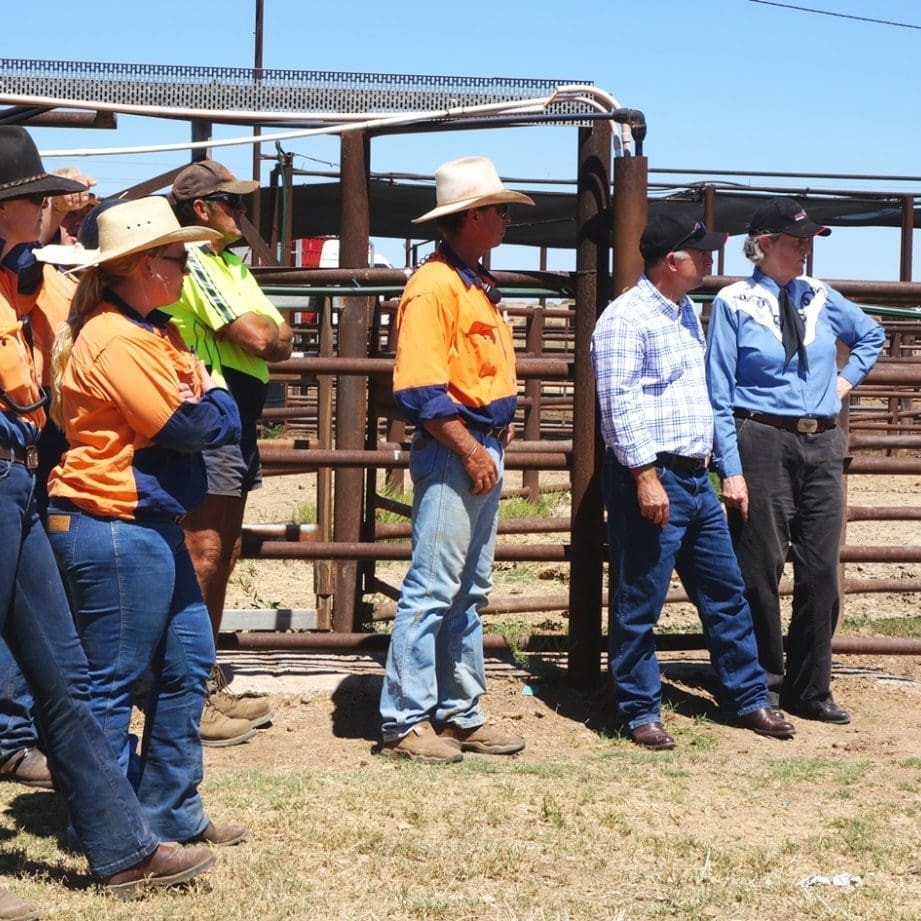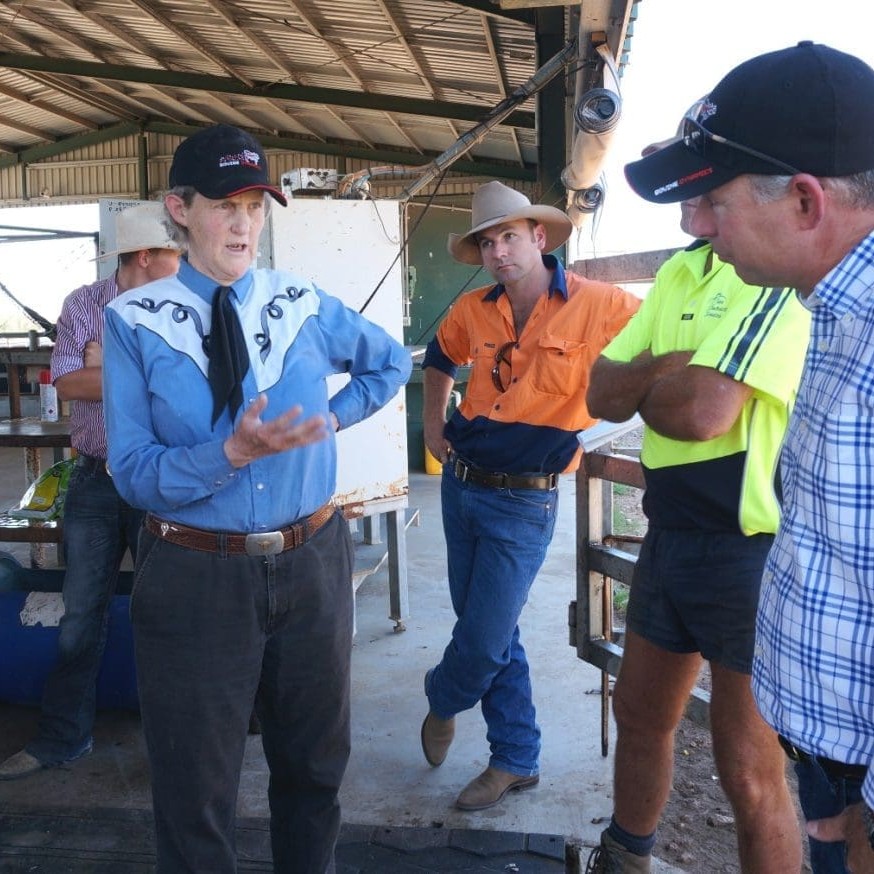Key points:
- Slaughter number remain high due to drought pressure & south’s normal season turnoff
- Growing competition for slaughter cattle from live exporters in Central and North Qld
- Grainfed turnoff continues at high rate
- Disappointing compliance rates among MSA stock
- Absence of ‘grain-enhanced’ slaughter cattle this spring, due to grain price
THE Eastern States beef kill continued to hover above 155,000 head last week, boosted by even larger seven-day kills in NSW and Victoria, and what is being seen by some processors as a ‘fresh wave’ of turnoff cattle out of droughted parts of Queensland.
The weekly five-state tally to Friday reported by the National Livestock Reporting Service reached 155,838 head, down just 0.3pc on the unusually heavy kill the week previous.
 Queensland’s numbers were back 1pc to 77,570, but remain historically high for this time of year, being +4pc on this same week in 2012.
Queensland’s numbers were back 1pc to 77,570, but remain historically high for this time of year, being +4pc on this same week in 2012.
In states further south, kills rose a further 1pc last week in NSW (38,591 head) and Victoria (27,223 head), while South Australia fell 5pc (8415 head) and Tasmania 1pc (4039 head).
Some Queensland processors have report a renewed surge in direct bookings, perhaps triggered by more ‘decision-making points’ being reached in the calendar by droughted producers, and the most recent three month outlook from BOM forecasting drier than average conditions for most of northern Australia from November to January.
 “We’re well in front again in bookings on our kills right across eastern Australia,” one large multi-site processor told Beef Central this morning.
“We’re well in front again in bookings on our kills right across eastern Australia,” one large multi-site processor told Beef Central this morning.
“A lot of cattle have come forward in the past week, and in Central Queensland, for example, we have kill slots pretty filled-out for five weeks again,” he said. “We were only two or three weeks out only a short time ago.”
“This year has definitely produced waves of turnoff cattle, as producers reach those decision-making points in the need for further lightening off in numbers.”
A flow of cattle north out of dry areas of northern NSW is also contributing to the current Queensland circumstances.
Adding to the slaughter momentum are big numbers of grainfed cattle hitting the market again – another consequence of large numbers of feeder cattle from dry areas of northern Australia flooding into feedlots during June and July.
The ALFA/MLA quarterly feedlot survey figures for June 30 showed a sharp 9pc lift in number so feed, reaching a seven-year high of 873,000 head, influenced heavily by the impact of drought across large areas of western and northern Queensland, NSW and the NT, forcing producers to place cattle on feed as a finishing strategy.
It is those cattle that are now hitting the market as 100-day or 70-day grainfeds. Fortunately grid pricing on those GF cipher cattle has not suffered, as they are among the only well-finished cattle currently available to Queensland processors.
Poor MSA compliance noted
Outside the grainfed kill, several large processors continue to report disappointing MSA compliance on cattle, both north and south. As touched on last week, some MSA-accredited processors are reporting a marked decline in grading performance among MSA cattle recently, due to either the drought or dramatic variability in weather.
“We’re finding it very difficult to get cattle to grade for MSA at the moment,” one of the nation’s largest multi-site MSA processors told Beef Central.
“In the south, it’s being caused mostly by stressors associated with wild temperature variations. Cattle are struggling to cope with the change, and it’s being reflected in grading performance.”
In Queensland, the grading problem is more due to the nutritional impact of drought on slaughter cattle being presented for grading.
“The glycogen bucket is very low in grassfed MSA cattle across Queensland, and it’s producing a lot of dark cutters,” a credible processor said. Beef Central plans to scrutinise recent MSA compliance in more detail, and will report back to readers in coming days.
One large processor is now refusing to quote on MSA cattle out of hard-hit areas, unless they have come off oats or a grain-bin, saying it currently involves “a lot of grading work for very little outcome.”
Little sign of ‘grain-enhanced’ cattle
Another contributing factor to poor MSA compliance this spring appears to be the lack of ‘grain-enhanced’ cattle, where a self-feeder is used to provide a higher energy ration in a dry paddock situation, without formal lotfeeding.
The price of feed this year is contributing to that. As Beef Central has reported in its recent 100-day grainfed trading budget reports, typical downs lotfeeders are currently asking $335/t for finished ration – the highest price seen in at least two and a half years. Producers using delivered ration prepared by a stockfeed company may be paying up to $400/t.
“There’s been a reluctance to put a bin in the paddock this year, perhaps because some were burnt a little in years gone by in cattle they had ‘grain enhanced’ in the paddock. They’ve figured that if they are going to feed them grain, they may as well get a certificate for it (receive a GF cipher through feeding to requirements in an NFAS certified feedlot).”
That decision perhaps, has also contributed to the larger numbers evident in feedlot placements this year, discussed above.
Southeast Queensland grids for major processors, Teys, JBS and Nippon remain unchanged this week, after rising 5c/kg in some cases over the two weeks previous.
Processor grid price offers from Southeast Queensland yesterday showed the top of the heavy cow grid is currently sitting at 300-305c/kg, with grassfed 0-2 tooth steer at 345c, and four-tooth 340c. The best grassfed MSA steer money we could find yesterday was 360c/kg, and grainfed MSA, 375c.
Mounting livex competition
An emerging demand trend in Central and North Queensland at present is live export demand, following recent Indonesian import permit releases, with evidence of boat cattle already being sourced out of the southern end of the Central Highlands as supplies are hard to come by.
That could pressure competition from export processing plants in Rockhampton (2), Biloela, Mackay and Townsville, local sources say.
One report suggested that a Wellards 5000-head boat that left Townsville over the weekend struggled with both weight requirements and spec for slaughter weight cattle, calling for weight range of 350- 600kg. Prices paid were 155c/kg for steer, 135c/kg for heifers, but unsubstantiated reports on the ABC this morning quoted new pricing, following yesterday’s permit announcement published on Beef Central, had risen to 210c steer ex Darwin.
Wellard hopes to load the larger Drover in Townsville next week, with about 12,000 feeder weight cattle @ minimum 270kg, plus some slaughter weight stock, if they can find them. The same money was being offered as recently as yesterday.
Eastern states saleyards cattle supply, as reported by MLA’s National Livestock Reporting Service, eased 9pc last week, compared with a week earlier. Most markets last week reported lower yardings, given the price falls experienced earlier.
At the conclusion of yesterday’s markets, the Eastern Young Cattle Indicator fell to 290¢/kg, decreasing 7c from this time last week.
- A point to note for next week’s kill: Butchers Picnic EBA holidays being celebrated at some large export sheds on Monday could put a dent in the current week’s kill, when it is reported by NLRS next Monday.



HAVE YOUR SAY